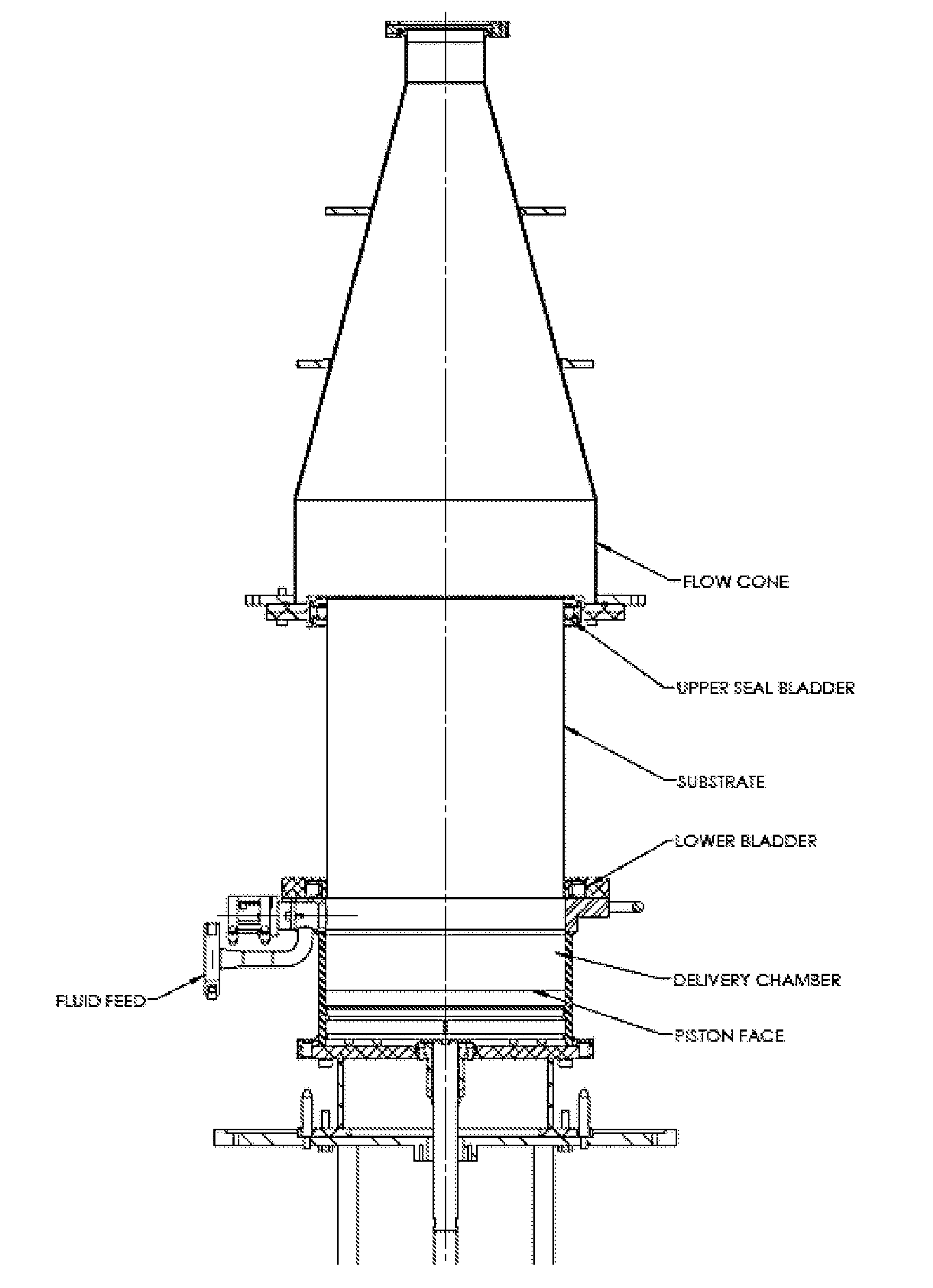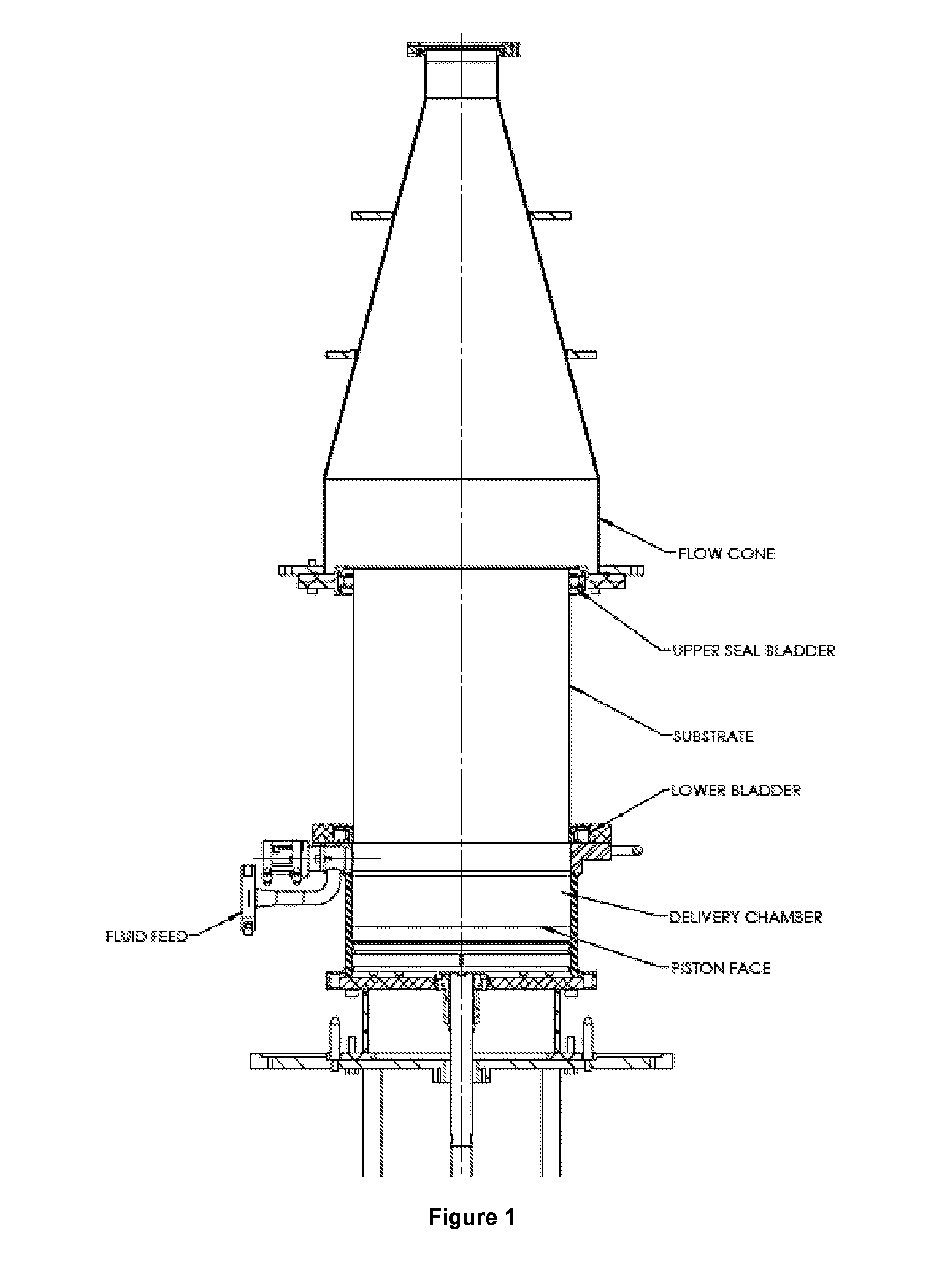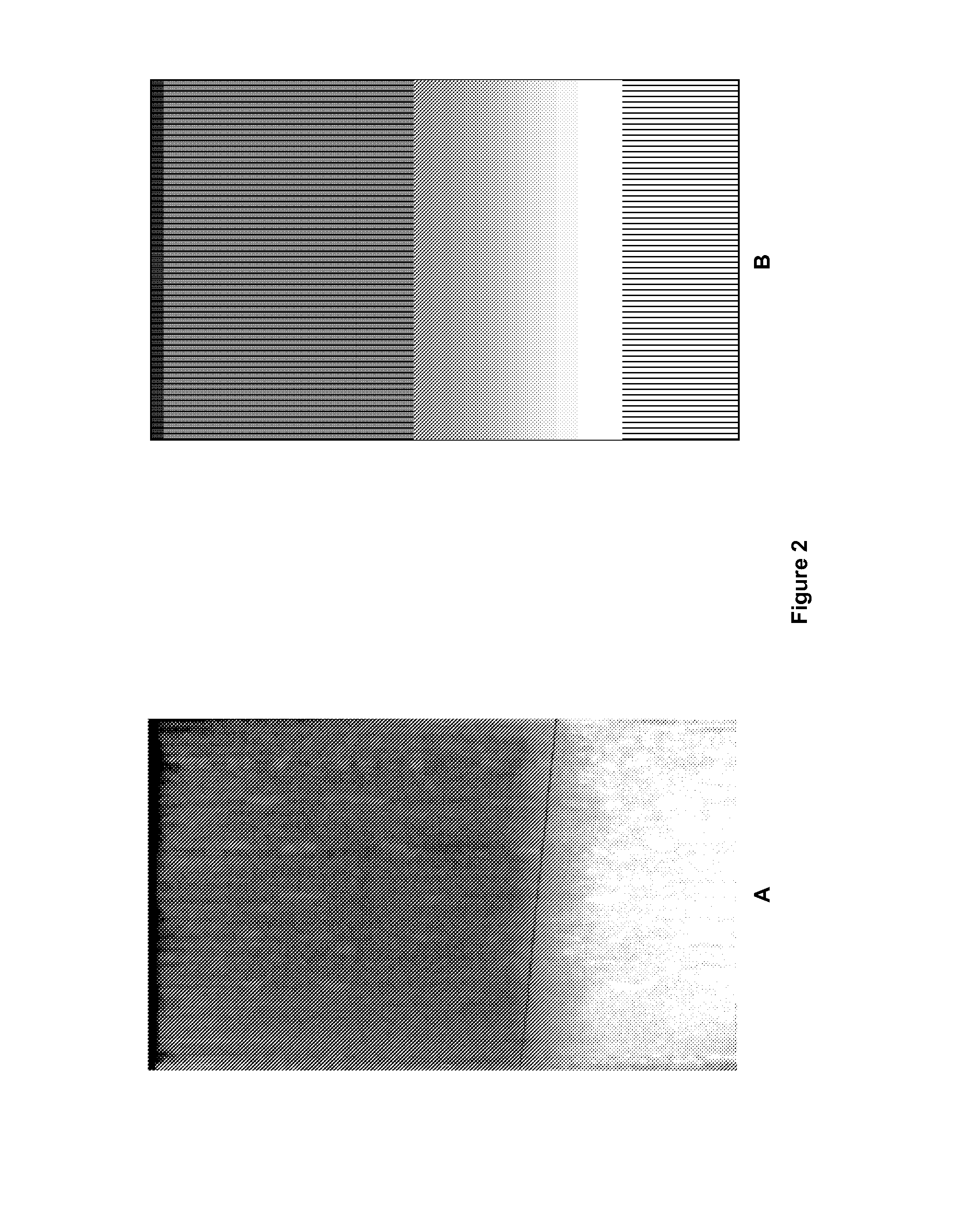Method of coating a substrate with a catalyst component
a technology of catalyst components and substrates, applied in the direction of physical/chemical process catalysts, separation processes, machines/engines, etc., to achieve excellent profile control and control of the dose length
- Summary
- Abstract
- Description
- Claims
- Application Information
AI Technical Summary
Benefits of technology
Problems solved by technology
Method used
Image
Examples
example 1
[0150]Washcoat Preparation and Substrate
[0151]A conventional three-way catalyst washcoat was prepared for coating monolithic flow-through substrates. The viscosity of the washcoat was measured at 17° C. using a “Brookfield RV DVII+Extra Pro” viscometer with a SC4-27 spindle. The 1 rpm shear viscosity was approximately 26500 cP and the 50 rpm shear viscosity was 1500 cP.
[0152]A flow-through cordierite monolithic substrate having a height of 3.09″, a diameter of 4.16″ and 900 cells per cubic inch was coated. It was desired to coat a length of 55% of the axial length of the substrate. Set-up coating trials had shown that 163.3 g of washcoat would deliver the desired amount of washcoat and PGM onto the part. The mass of 163.3 g was a pre-determined amount (i.e. mass).
[0153]Coating Process
[0154]A pre-determined amount of washcoat was dispensed into the coating rig for subsequent monolith coating using a volumetric piston delivery system. The pre-determined amount of washcoat was a pre-de...
example 2
[0162]Washcoat Preparation and Substrate
[0163]A conventional three-way catalyst washcoat was prepared for coating monolithic flow-through substrates. The viscosity of the washcoat was measured at 17° C. using a “Brookfield RV DVII+Extra Pro” viscometer with a SC4-27 spindle. The 1 rpm shear viscosity was approximately 6500 cP and the 50 rpm shear viscosity was 285 cP.
[0164]A flow-through cordierite monolithic substrate having a height of 4.29″, a diameter of 4.16″ and 900 cells per cubic inch was coated. It was desired to coat a length of 50% of the axial length of the substrate. Set-up coating trials had shown that 190.0 g of washcoat would deliver the desired amount of washcoat and PGM onto the part. The mass of 190.0 g was a pre-determined amount (i.e. mass).
[0165]Coating Process
[0166]A pre-determined volume of washcoat was manually delivered to the apparatus (e.g. by hand) by pausing the normally automated sequence at the appropriate time, as explained below. The coating apparat...
example 3
[0171]Washcoat Preparation and Substrate
[0172]A conventional washcoat formulation for selective catalytic reduction (SCR) comprising a Cu zeolite was prepared. It was desired to coat a length of 60% of the axial length of a wall-flow filter with washcoat formulation.
[0173]Coating Processes
[0174]A wall-flow filter was coated with the washcoat formulation using the coating process of Example 1 (in accordance with the invention). The vacuum was triggered 0.5 seconds before introduction of the washcoat formulation through the lower end of the filter was complete (i.e. when the piston face touches the lower face of the filter).
[0175]As a comparison, the method was repeated using the same type of wall-flow filter and the same washcoat formulation. Instead of triggering the vacuum 0.5 seconds before the complete introduction of the washcoat formulation through the lower end of the filter, the vacuum was triggered 2 seconds after the introduction of the washcoat formulation through the lowe...
PUM
| Property | Measurement | Unit |
|---|---|---|
| viscosities | aaaaa | aaaaa |
| viscosities | aaaaa | aaaaa |
| lengths | aaaaa | aaaaa |
Abstract
Description
Claims
Application Information
 Login to View More
Login to View More - R&D
- Intellectual Property
- Life Sciences
- Materials
- Tech Scout
- Unparalleled Data Quality
- Higher Quality Content
- 60% Fewer Hallucinations
Browse by: Latest US Patents, China's latest patents, Technical Efficacy Thesaurus, Application Domain, Technology Topic, Popular Technical Reports.
© 2025 PatSnap. All rights reserved.Legal|Privacy policy|Modern Slavery Act Transparency Statement|Sitemap|About US| Contact US: help@patsnap.com



